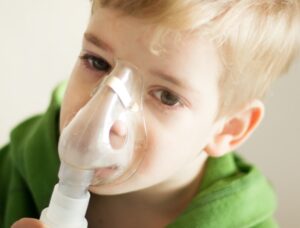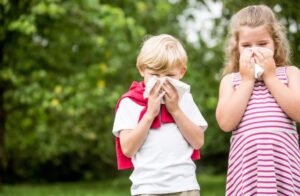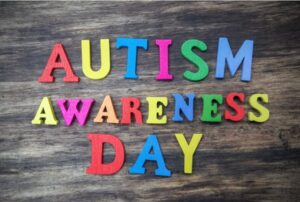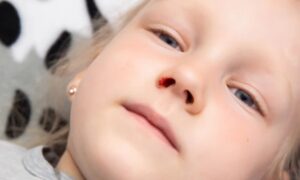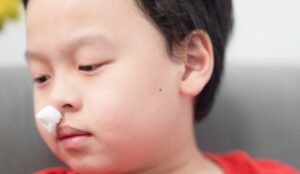Asthma is a prevalent chronic condition among children, often marked by difficulty breathing and respiratory discomfort. While some children grow out of the symptoms, others may experience asthma into adulthood. Early detection and effective management can make a significant difference in a child’s quality of life, so understanding asthma's symptoms, potential triggers, and treatment options is crucial.
Recognizing Asthma in Children
Asthma in children can manifest in various ways, sometimes differently than in adults. According to the Global Initiative for Asthma (GINA), the following are key indicators to monitor for asthma symptoms at home:
- Wheezing
- Wheezing is a high-pitched, whistling sound produced when your child breathes, especially during exhalation. This sound is often caused by narrowed airways, a hallmark of asthma.
- Wheezing may become more apparent during cold weather or following a respiratory infection.
- Nighttime Coughing
- Coughing that frequently occurs or worsens at night could indicate asthma. This symptom arises because lying down may restrict the airways or increase mucus production, exacerbating asthma symptoms.
- If your child coughs consistently at night without showing signs of a cold or flu, it could be worth evaluating for asthma.
- Exercise-Induced Coughing
- Physical activity often triggers coughing in children with asthma. If your child regularly coughs after running, playing sports, or even walking up stairs, this could be a sign.
- Unlike typical post-exercise breathlessness, asthma-induced coughing persists and may lead to wheezing or chest tightness.
- Symptoms After Exposure to Allergens or Pollutants
- Environmental factors play a big role in asthma triggers. Common allergens such as pollen, dust, pet dander, and pollutants like smoke or strong odors may trigger asthma symptoms.
- If your child experiences chest tightness, wheezing, or coughing after exposure to certain environments, allergens could be a significant asthma trigger.
- Persistent Cold Symptoms
- Children with asthma may display cold-like symptoms that last longer than usual, often more than ten days. These symptoms may include a chronic cough, persistent mucus production, and respiratory discomfort.
- Recurring “colds” may not be colds at all but could be indicative of underlying asthma, especially if these symptoms are accompanied by wheezing.
- Response to Asthma Medication
- If your child’s symptoms improve significantly after using asthma medications, such as an inhaler, this response can confirm asthma.
- Bronchodilators, which are used in inhalers, help open up airways, relieving asthma symptoms. A positive response to these medications can be a strong indicator that asthma is the root cause of your child’s breathing issues.
Understanding the Asthma Diagnosis Process
If your child exhibits any of the above signs, consulting a healthcare provider for a comprehensive assessment is essential. Diagnosing asthma in children involves a combination of medical history, physical examination, and tests, particularly if the child is very young and unable to perform lung function tests.
- Medical History and Symptom Tracking
- A doctor will ask about your child’s symptoms, their frequency, severity, and potential triggers. Any family history of asthma or allergies is also relevant.
- Tracking your child’s symptoms over time can provide valuable insight. Document when symptoms arise, their duration, and their intensity.
- Lung Function Tests
- For older children who can follow directions, lung function tests, such as spirometry, measure how much air a child can exhale and how fast. Spirometry can help determine the severity of asthma and guide treatment.
- For younger children who cannot undergo standard lung function tests, doctors may rely more heavily on symptom assessment and medical history.
- Allergy Testing
- Since allergies often trigger asthma, an allergist might perform a skin or blood test to determine if your child is sensitive to common allergens, such as pollen, dust mites, or animal dander.
- Peak Flow Monitoring
- Peak flow monitoring is another diagnostic tool where a child exhales into a device to measure how quickly they can expel air. Changes in peak flow readings can indicate worsening asthma, helping with early intervention.
Causes and Triggers of Childhood Asthma
The exact cause of asthma remains unknown, but it is often a combination of genetic and environmental factors. Children with a family history of asthma or allergies are at a higher risk. Common asthma triggers include:
- Airborne Allergens: Pollen, dust mites, pet dander, mold, and insect droppings are common triggers for asthma.
- Air Pollutants and Irritants: Smoke, strong odors, pollution, and even cold air can trigger asthma symptoms.
- Respiratory Infections: Colds, flu, and other respiratory illnesses can exacerbate asthma in children.
- Physical Activity: Exercise can lead to asthma attacks in some children, often called exercise-induced bronchoconstriction (EIB).
- Stress and Anxiety: Emotional stress and anxiety can worsen asthma symptoms in some children.
Managing Asthma in Children
Asthma is a chronic condition that can be managed effectively with proper treatment. While asthma cannot be cured, many children lead full, active lives with well-controlled symptoms. Management strategies include:
- Medications
- Rescue Inhalers (Short-Acting Bronchodilators): Used during an asthma attack to relieve symptoms quickly. Albuterol is a common rescue inhaler medication.
- Controller Medications (Long-Term Control): For children with frequent symptoms, daily medication, such as inhaled corticosteroids, helps reduce inflammation and prevent attacks.
- Allergy Medications: Antihistamines or allergy shots may help if allergies trigger asthma.
- Environmental Control
- Keeping the home environment clean and free from dust, pet dander, and other allergens is essential. Regularly vacuum, use air purifiers, and avoid smoking indoors.
- During high-pollen seasons, keep windows closed and encourage your child to wash hands and change clothes after being outdoors.
- Dietary Adjustments
- While diet alone cannot cure asthma, a well-balanced diet rich in fruits, vegetables, and omega-3 fatty acids may help reduce inflammation. Certain foods, such as fatty fish, leafy greens, and nuts, are known for their anti-inflammatory properties.
- Regular Monitoring and Action Plan
- Work with your child’s healthcare provider to create an asthma action plan. This plan should detail which medications to take daily, when to use a rescue inhaler, and what to do in an emergency.
- Monitoring your child’s symptoms and regularly checking peak flow readings (if recommended) can help you stay on top of asthma management and prevent severe attacks.
Educating and Empowering Your Child
As children grow older, teaching them about their asthma condition and how to recognize symptoms is beneficial. Empowering them to manage their condition will help them feel in control. Simple steps include:
- Recognizing Symptoms: Teach them to identify when they are starting to feel short of breath or tight in the chest.
- Using an Inhaler Correctly: Show them how to use their inhaler properly and remind them to always carry it.
- Knowing When to Seek Help: Encourage your child to communicate if they are feeling unwell or if they need help managing symptoms.
The Rising Prevalence of Childhood Asthma
Asthma rates among children have been rising over the past few decades. According to epidemiological studies, the number of children diagnosed with asthma has nearly tripled in recent years. This rise is partially due to increased air pollution and lifestyle changes, as well as improved awareness and diagnostic practices. However, asthma also often develops in children with a predisposition to allergies. Once a child develops asthma, it typically becomes a lifelong condition, but with proper management, most children can achieve well-controlled asthma.
Conclusion
Asthma is a common, manageable condition among children. Recognizing symptoms early and understanding triggers are key to providing effective treatment. With medications, environmental adjustments, and regular monitoring, children with asthma can enjoy an active and healthy life. For parents, creating a supportive environment and helping children understand their condition will empower them to manage their symptoms and thrive. If you suspect your child has asthma, consult a healthcare professional to discuss the best path forward in diagnosis and treatment.
Reference: Epidemiological Survey of Childhood Asthma、GINA
Image supported by © xixinxing, 123RF Free Images





